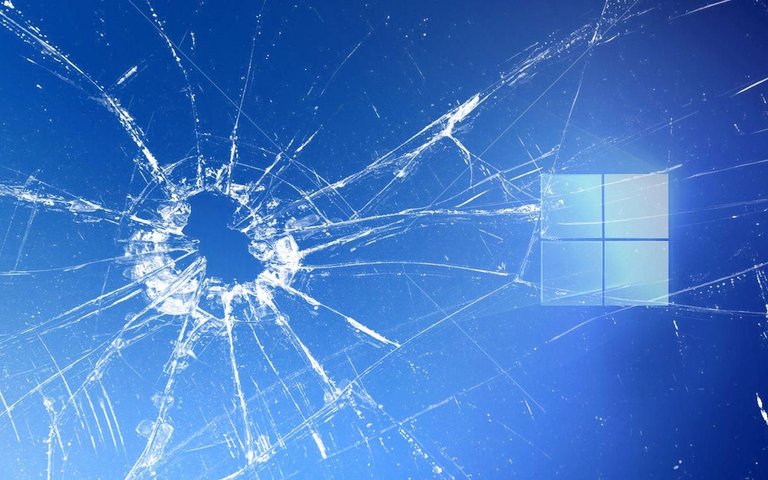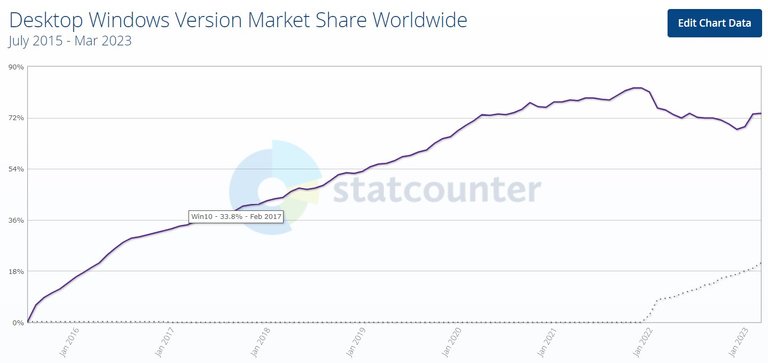
Windows 11 was launched one and a half years ago but was not welcomed with much success. In this article, we will explore some of the reasons for the slow uptake of Windows 11, why past versions of Windows were more successful, and analyze why Windows 11 has failed to make a compelling case for itself.
The launch of Windows 11 was not met with much success. Many users found that the new operating system was not significantly different from its predecessor. Since then, Windows 11 has been criticized for being a mere cosmetic update to Windows 10, with no significant improvements to the user interface or overall functionality. Additionally, there were some compatibility issues with existing hardware and some legacy devices, which made it difficult for some users to make the switch; these were so relevant that Microsoft had to adopt a staged process that lasted several months, where devices flagged by compatibility blacklists were blocked from receiving the upgrade. These compatibility issues were particularly frustrating for users who had invested in expensive hardware that ran perfectly under Windows 10 but was not compatible with Windows 11.
Despite being the newest version of Windows, still today many users prefer to stick with Windows 10 instead of upgrading to Windows 11. There are three main reasons for this.
First, Windows 10 is a stable and reliable operating system that has been around for several years. This means that most of the bugs have been ironed out, and users can trust the system to work correctly.
Second, Windows 10 is a mature OS firmly settled in maintenance mode, which means that users receive regular updates and security patches that are reliable and well-tested, as no new features are introduced. This is particularly important in the enterprise world, where stable and dependable software updates are paramount, and Windows 11 has had a long string of troublesome updates that don't bode well with IT managers.
Finally, Windows 10 is familiar to users, which means that they don't have to learn a new interface or new ways of doing things. This familiarity is particularly important for users who rely on their computers for work and is extremely important for businesses.
When comparing the adoption rates of Windows 10 and Windows 11 in their first 18 months, it is apparent that Windows 10 was much more successful. Windows 10 was adopted by over 300 million devices in its first year, whereas Windows 11 has only been adopted by around 100 million devices in its first 18 months.

This slow uptake can be attributed to several factors, including compatibility issues, a lack of significant innovation in Windows 11, and higher system requirements. Most of all, large enterprises are reluctant to upgrade as that brings migration risks and the need to re-train users on a different UI which seems to have been designed differently just for the sake of it, without introducing any real benefit.
It is interesting to consider how all successful versions of Windows had a purpose. For example, Windows XP was the first to integrate the NT kernel with a user-friendly UI; this made it easier for users to navigate the system and perform basic tasks. Windows 7 was designed to help Microsoft get over the debacle of Vista and its perceived issues. Windows 7 was also designed to be faster and more reliable than Vista, which had been criticized for being a resource hog and crashing and freezing frequently due to its initial lack of driver support. Windows 10 was created to make everyone forget about Windows 8 and its catastrophic UI that had been forced on users. Windows 10 was also designed to be more user-friendly than its predecessor, with features like Cortana, virtual desktops, and a new Start menu.
In comparison, Windows 11 appears to lack a distinct purpose when compared to its predecessor. While the updated user interface may be different, it does not introduce any significant innovations and seems to be changed merely for the sake of change. It was half-baked at launch and even included regressions as some Windows 10 features were not initially available. This lack of a clear purpose has made it difficult for users to see the value of upgrading from Windows 10 to Windows 11. While Windows 11 does have some new features, such as an updated look and feel, a new Taskbar, Snap Layouts, and Snap Groups, these features are not significant enough to justify the upgrade for most users.
One of the reasons for the slow uptake of Windows 11 has been its more demanding system requirements. Compared to its predecessor, Windows 11 requires newer hardware, which has left many users with older machines unable to upgrade. The new requirements include a processor that supports secure boot, TPM 2.0, and at least 4 GB of RAM. Microsoft has claimed that these requirements are necessary for security purposes and to improve overall performance, but their claims have been debunked by custom installations running well on officially unsupported hardware that lacked secure boot and TPM, and many users have been left feeling that they are being forced to upgrade their hardware to use the latest operating system.
Windows 11's increased demands on hardware have made it unappealing to users who are content with their current machines, and this too has played a role in the slow adoption rate of the operating system. Those who have tried to upgrade to Windows 11 with older hardware have reported performance issues, including slower boot times and slower overall system performance. This is a significant concern for users who may not have the financial resources to upgrade their hardware or who feel that their existing hardware is adequate for their needs.
Another issue with Windows 11's system requirements is that they appear to have been artificially introduced by Microsoft to create a watershed moment and push sales of new hardware. This has caused many users to question the company's motives and whether the new operating system truly requires such demanding hardware. Furthermore, Microsoft's recent decision to lower the minimum requirements for Windows 11 has only added to this skepticism.
In conclusion, the slow adoption rate of Windows 11 can be attributed to several factors. Firstly, the lack of a clear purpose for the operating system has left many users questioning its necessity. Secondly, the system requirements for Windows 11 are more demanding, which has made upgrading an unappealing prospect for those with older hardware. Finally, the new privacy concerns with Windows 11 have not gone unnoticed, and privacy-conscious users may be hesitant to upgrade. Nonetheless, Microsoft has been working to address these concerns and improve the overall experience of Windows 11. The operating system is showing promise, but only time will tell if it can live up to the success of its predecessors.
Despite the criticism and backlash, Microsoft is forging ahead with Windows 11. The company has made significant strides in addressing some of the initial concerns raised by users, and the operating system is showing promise. However, as of now, it still fails to make a compelling case for upgrading existing machines that run Windows 10 well and Windows 11 may end up being yet another ugly duckling for Redmond, especially as customers' expectations are excited by mere rumors of Windows 12 arriving in 2024.
I still haven't upgraded. I might when they compel me to...maybe.
!discovery 29
I would like to do an upgrade but my laptop is not compatible with Windows 11: /
This post was shared and voted inside the discord by the curators team of discovery-it
Join our Community and follow our Curation Trail
Discovery-it is also a Witness, vote for us here
Delegate to us for passive income. Check our 80% fee-back Program
Excellent article, in Cuba most people still have Windows 7 on their PCs